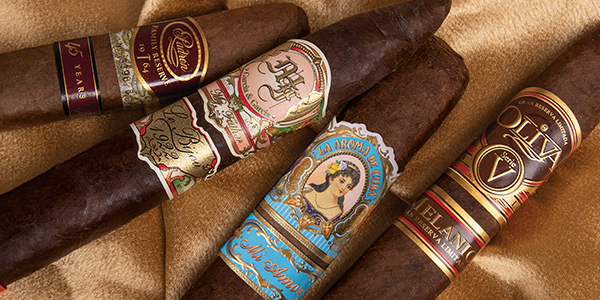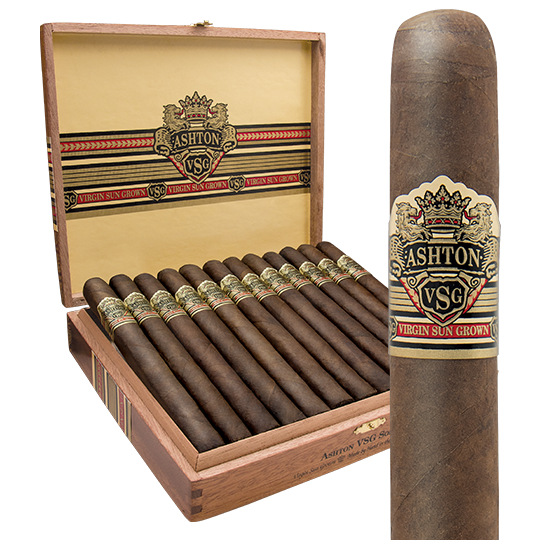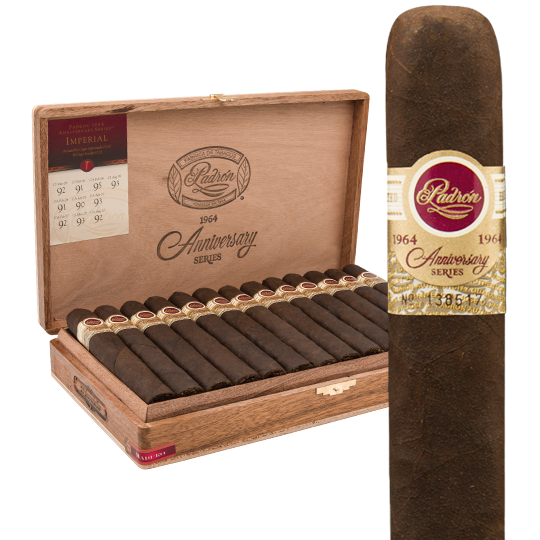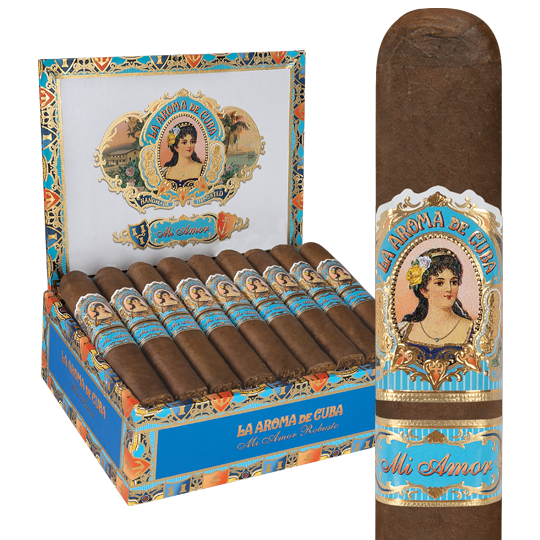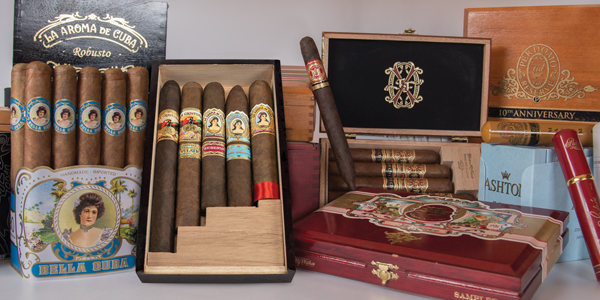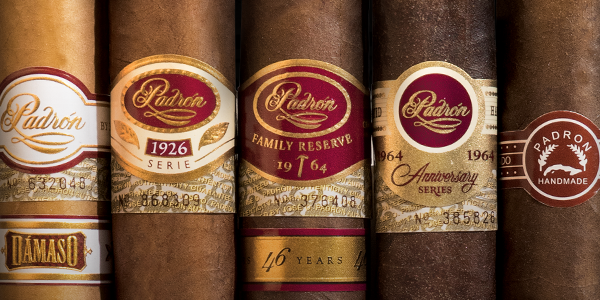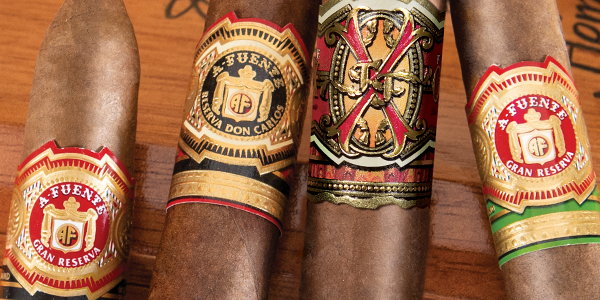What Are Box-Pressed Cigars & How Are They Different?
A box-pressed cigar is a cigar pressed into a square shape. Box-pressed cigars are embraced by many cigar lovers today, but some find the shape simply uncomfortable to smoke. There are varying degrees of box-pressing as well, from a soft box-pressed profile with partially rounded corners like Ashton VSG to what is called a trunk-pressed cigar, or a cigar with very sharp 90-degree corners like you’ll find on Padron 40th Anniversary. Box-pressed cigars account for dozens of the most sought after and highest-rated cigars in Cigar Aficionado’s archives. What makes a box-pressed cigar different from a traditional round shape and where did box-pressing originate?
History of Box-Pressed Cigars
The origins of box-pressing cigars are unclear. Although we can trace it back to pre-embargo Cuba, we’re not one-hundred percent certain which brand was the first to press its cigars. The rationale behind box pressing is also varied and a source of amusing speculation.
Because freshly rolled cigars are damp and somewhat malleable, they can be compressed into a more constrictive shape, either before they are placed in a cigar box or after. Some say the practice originated to maximize the space available in cigar boxes for greater packaging efficiency.
Others claim box-pressing began to prevent cigars from rolling off a table or a flat surface, particularly after they’re lit. Seems like a logical conclusion.
There are some who attest cigars were box-pressed to prevent them from rolling around and sustaining damage during transport, on sailing vessels for example. Sounds like a plus for cigar-plundering pirates.
Regardless of what backstory you believe, today’s box-pressed cigars owe their popularity to Padron. During the Cigar Boom of the 1990s, the brand released its now lauded Padrón 1964 Anniversary blend to celebrate the company’s 30th anniversary. Originally a limited edition blend, the cigar’s unconventional box-pressed profile captivated cigar lovers and critics and became a hallmark Padrón fans associated with the brand’s best cigars. Other brands followed suit.
Differences between Box-Pressed and Round Cigars
Besides the obvious physical differences that distinguish box-pressed cigars, what about their taste, or draw? Do box-pressed cigars perform differently from standard Parejos, or round shapes?
Really, it’s a matter of personal preference. Cigar lovers may prefer one style or the other, but there are not a lot of cigars rolled in both a box-press and a round shape in the exact same blend and dimensions to test which is “better.”
Generally, box-pressed cigars are credited for offering a slower burn with a looser draw and, some claim, more consistent flavor. Much depends on a cigar’s blend and the cigar-maker’s quality control measures.
Smoking a box-pressed cigar, however, is distinct because of how the shape fits in your mouth. You can’t fully clasp your lips around a box-pressed cigar the way you can with a round shape. As a result, you pull air from outside the cigar into your palate when you draw on a box-pressed shape. This encourages a cooler draw.
How to Cut a Box-Pressed Cigar
Because most cigar cutters are designed to cut a round cigar, box-pressed shapes don’t always easily fit into the aperture of a standard guillotine cutter. If you prefer a box-pressed shape, especially in a bigger ring gauge, consider using a punch cutter or a cigar scissors.
With a punch cutter, multiple punch cuts can be applied to the cigar’s cap if more air flow is desired. Be gentle in punching the cigar, though. Because of its flat surface, the cap can crack if too much pressure is applied with a punch cutter. If you choose to use a cigar scissors, make sure it opens wide enough to encompass the cigar’s ring gauge. A standard guillotine will work on a box-pressed Torpedo or Belicoso, thanks to the tapered head on each shape.
How Box-Pressed Cigars Are Made
Box-pressed cigars can be created in a handful of ways. The more common or standard method is to press the cigars after they’ve been placed in their boxes. The cigars are rolled in a traditional round Parejo shape. Then, they are tightly packed into their cigar boxes which are stacked in a pile or series of piles. The piles are fixed within a large hand-cranked press where pressure is increased gradually. The rounded cigar shapes are squared off as the space between the cigars is reduced and they are gently forced to conform the interior of the box. Although the cigars are not a perfect square shape, they maintain a pressed appearance when they are shipped off to the retailer.
The other method for box-pressing cigars is called trunk-pressing. With trunk-pressing, each individual cigar is compressed between a series of wooden slats for a period of 30 minutes to 12 hours. The cigars are clamped in a very squared-off, fixed shape and rotated to press all four sides with equal pressure. Trunk-pressing gives a cigar sharp, meticulous corners, but it requires added time and skill. It must be performed carefully so as not to split or damage the wrapper leaf.
Top-Rated Box-Pressed Cigars
Even those who’ve sworn off box-pressed cigars have a hard time ignoring the temptation to try them. Arturo Fuente Don Carlos Eye of the Shark, My Father Le Bijou 1922 Torpedo Box Press, Padron Family Reserve #45 Maduro, Flor de las Antillas Toro, Oliva Serie V Melanio Figurado, and Alec Bradley Prensado Churchill not only share a box-pressed shape, they’ve also taken home Cigar Aficionado’s coveted ‘#1 Cigar of the Year’ title.
Dozens of other box-pressed gems like the 94-rated Ashton VSG, 95-rated La Aroma de Cuba Mi Amor, and 95-rated Rocky Patel Sun Grown Maduro have cracked Cigar Aficionado’s ‘Top 5.’ A diverse mix of prominent cigar-makers, tobacco-growing regions, and wrapper varietals are represented in a list of the best box-pressed cigars available today. It’s difficult to ignore the appeal box-pressed cigars possess. Choose a few to add to your collection. You won’t be disappointed.

